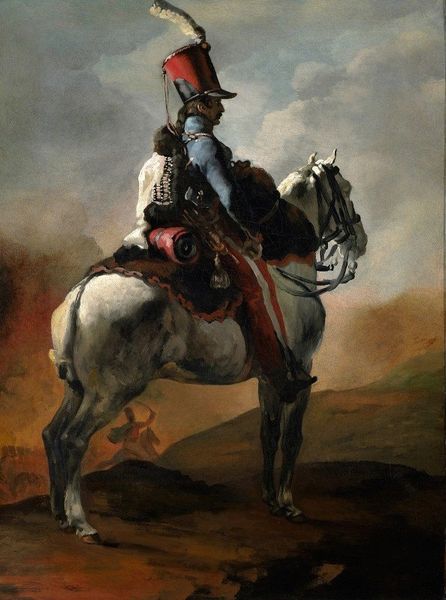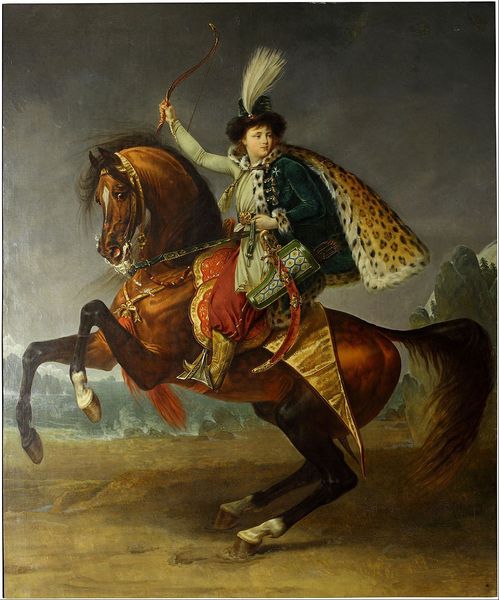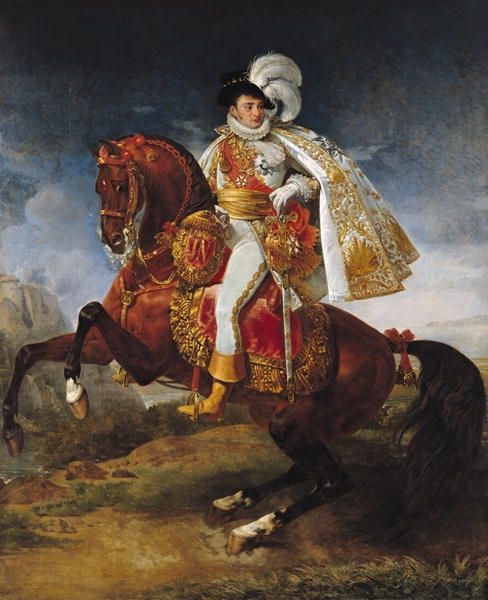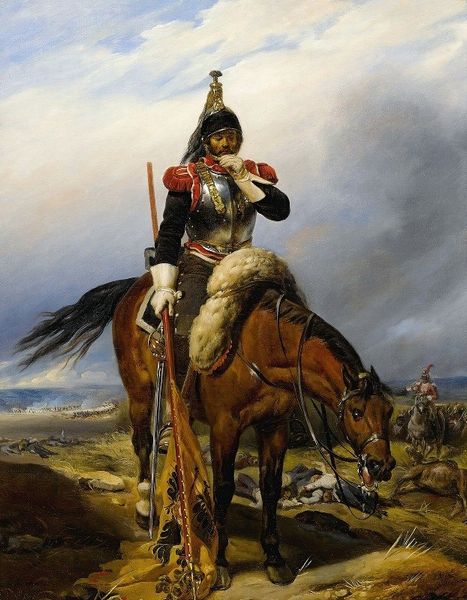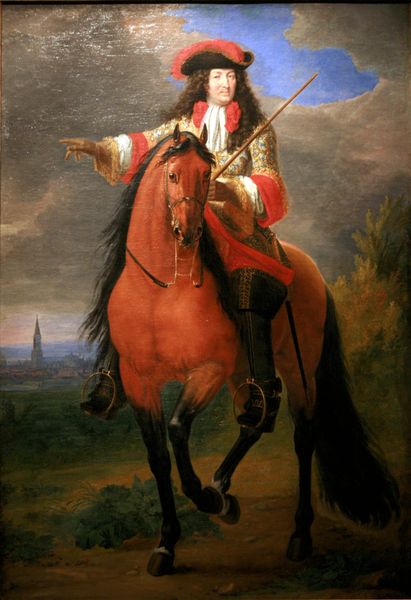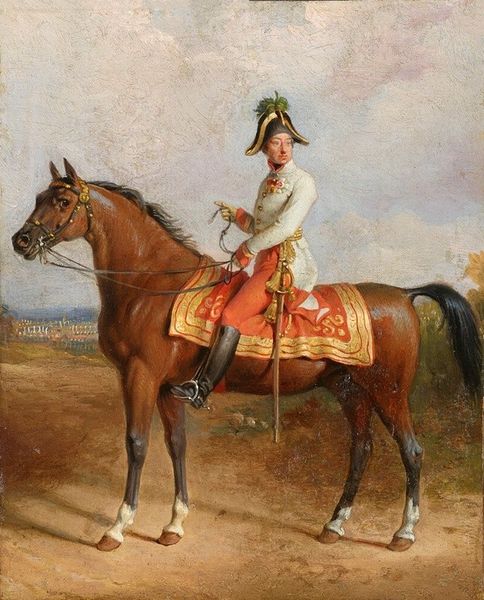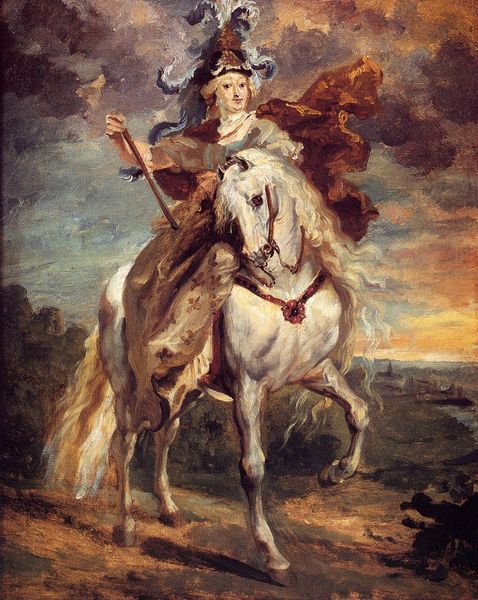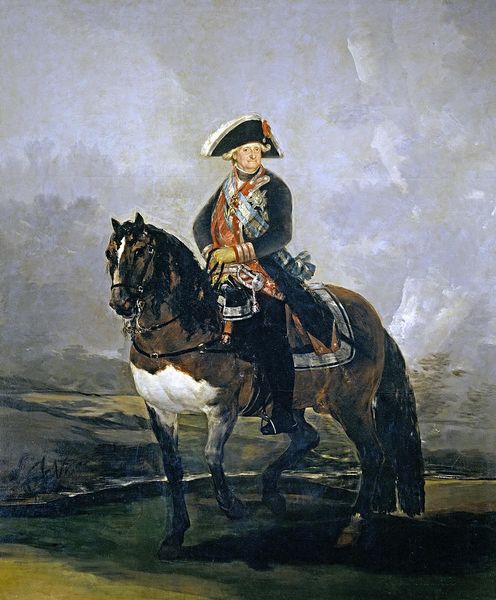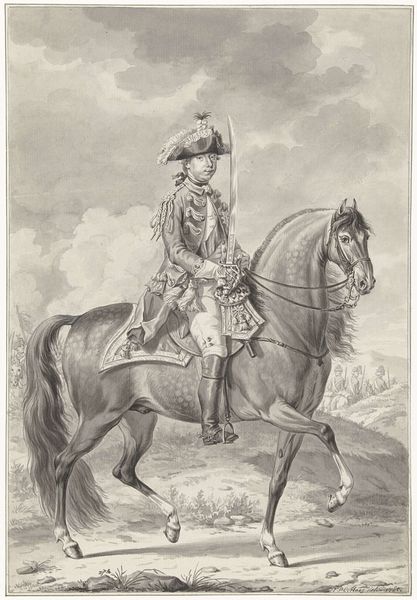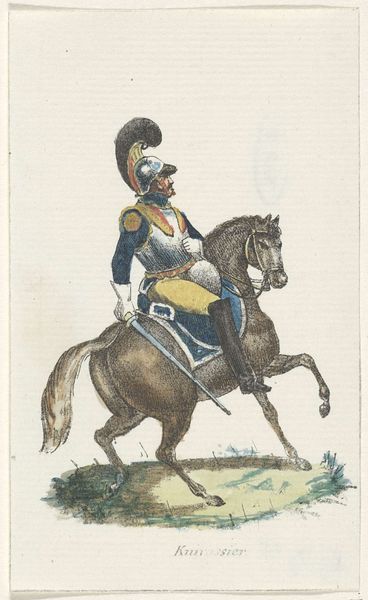
painting, oil-paint
#
portrait
#
painting
#
oil-paint
#
oil painting
#
romanticism
#
animal portrait
#
horse
#
surrealism
#
mythology
#
history-painting
#
portrait art
Copyright: Public domain
Editor: Here we have Antoine-Jean Gros’s "Equestrian Portrait of Joachim Murat," created in 1812 using oil paint. It’s… intense. The theatrical pose, the somewhat surreal horse – what's your take on this piece? Curator: Well, placing this portrait within its historical moment is crucial. Gros painted this during the Napoleonic era, a period defined by aggressive self-fashioning and propaganda. Note the specific attributes chosen for Murat – what do you make of them? Editor: He looks every bit the powerful general, adorned in military regalia… I’m intrigued by the tiger skin draped over the horse. Curator: Exactly. The tiger skin acts as a visual symbol, communicating Murat’s bravery and exotic associations of power, but also the politics of empire. How might the French audience have read these symbols, considering the power dynamics of that period? Editor: I suppose it’s a clear signal of French dominance, presenting them as almost mythic figures. Was it common to depict rulers this way back then? Curator: Representations of leadership, particularly through equestrian portraits, often functioned as powerful tools of statecraft, legitimizing rule and projecting authority, so yes, these elements are pretty much "on brand". The composition of the portrait further amplifies these ideas through scale, idealized physique and the dynamic pose that reinforces his martial prowess. It is also worth noting that there has always been a question regarding this piece’s location and purpose. This piece can also be examined using those avenues of thought. What would change in the approach of a piece like this commissioned for the subject himself, or for propaganda to be consumed in France? Editor: This helps a lot – understanding the artwork in its historical and social setting makes such a difference. I’ll definitely remember this lens for future studies! Curator: Likewise, this insight makes me rethink its message and what audiences may think about it when they come see it.
Comments
No comments
Be the first to comment and join the conversation on the ultimate creative platform.
